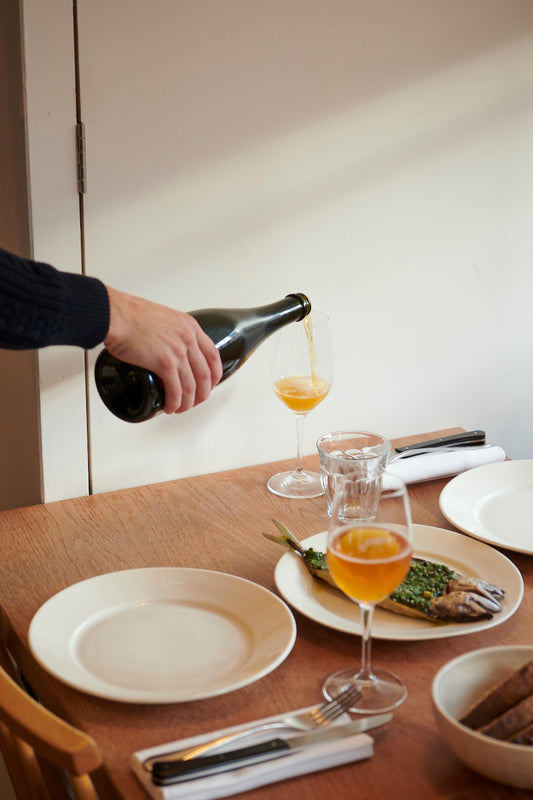
#10 - How is Cider made? (Part 2)
Share
Now we come to the stage where we need to get the juice from the apples! There are lots of different kinds of equipment a cider maker can use these days, but they all do the same pretty simple thing: press the juice from the fruit. But as we already mentioned; apples are far stronger than grapes, so before we can get pressing, the apples must be ground up, in a process called 'milling'.
Milling & Pressing:
Milling breaks down apples into smaller chunks so the juice can be more easily pressed. Picture big spinning metal blades, like a big blender, and that's the kind of tool makers tend to use today. But traditionally apple milling was done with a big circular stone trough and mill wheel, that a horse would walk around in circles to crush the apples.
Traditionally the milled apple was wrapped in cloths (called a 'cheese cloth'), layer by layer (as shown in the photo above) and then pressed. The cloths and often wooden boards between each layer, give enough structure to press the milled apples while allowing the juice to escape. Before cloths and boards were used, straw was used to give this support, binding the structure together as it's pressed.
But today, technology has also made pressing far easier for cider makers, and there are all sorts of presses that use different forms of pressure to press the juice from the milled apples. While some makers still like use the traditional ways, rather than more modern technology, the goal is basically the same: get the juice from the apples.
Milling breaks down apples into smaller chunks so the juice can be more easily pressed. Picture big spinning metal blades, like a big blender, and that's the kind of tool makers tend to use today. But traditionally apple milling was done with a big circular stone trough and mill wheel, that a horse would walk around in circles to crush the apples.
Traditionally the milled apple was wrapped in cloths (called a 'cheese cloth'), layer by layer (as shown in the photo above) and then pressed. The cloths and often wooden boards between each layer, give enough structure to press the milled apples while allowing the juice to escape. Before cloths and boards were used, straw was used to give this support, binding the structure together as it's pressed.
But today, technology has also made pressing far easier for cider makers, and there are all sorts of presses that use different forms of pressure to press the juice from the milled apples. While some makers still like use the traditional ways, rather than more modern technology, the goal is basically the same: get the juice from the apples.


